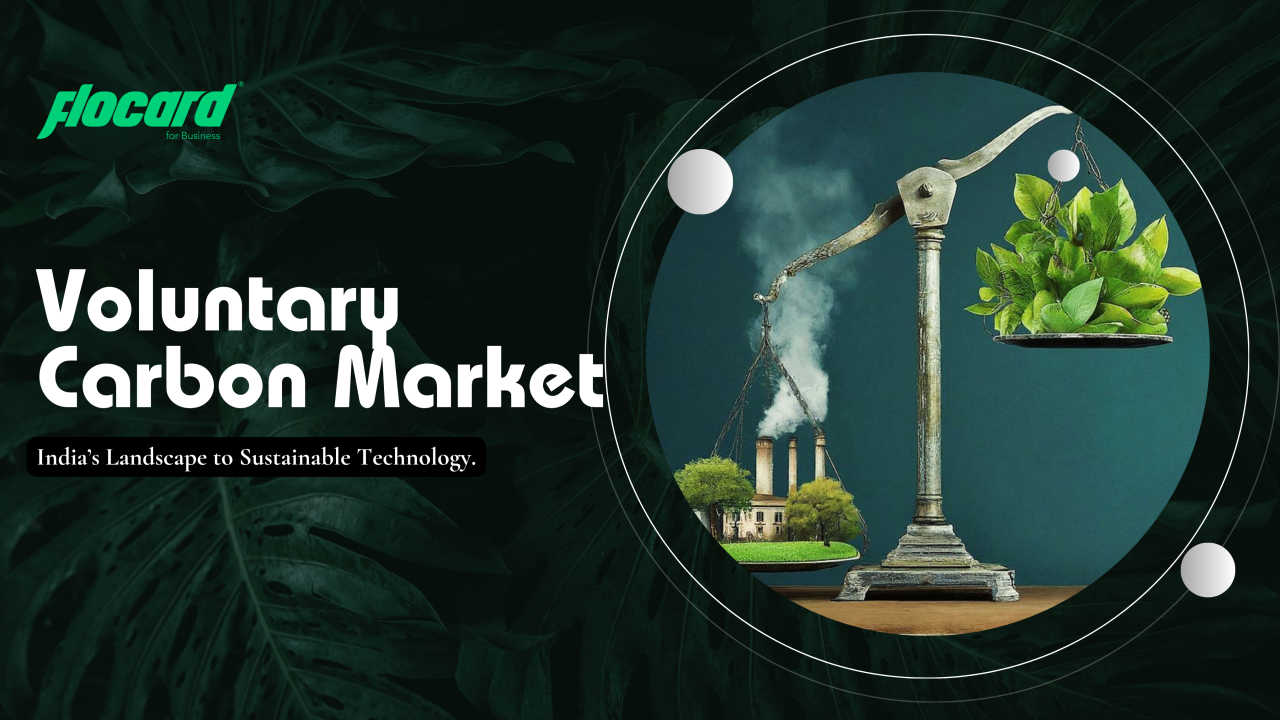Unlocking India's Potential in the Voluntary Carbon Market

ndia's VCM Landscape: Navigating Challenges and Seizing Opportunities
India is emerging as a pivotal player in achieving sustainability goals through the Voluntary Carbon Market (VCM) due to its growing economy and significant carbon footprint. The VCM enables businesses and individuals to offset their carbon emissions by purchasing carbon credits from industries that reduce greenhouse gases. However, as a developing country, India faces obstacles to growing its Carbon Market and realizing its potential to improve our climate. How can India navigate these complexities and unlock the full benefits of the VCM? This article explores the potential challenges and opportunities for shaping the future of the Carbon Market.
Overview of India's VCM Landscape
India's carbon emissions are on the rise, prompting the Government of India to amend the Energy Conservation Act, 2001, leading to the establishment of a carbon credit market in India. This amendment incentivizes emission reductions. India’s VCM is characterized by a diverse range of participants, including Planters Communities, NGOs, enterprises providing carbon credits trading platforms, and large corporations. There is an increasing focus on community-based projects and technological innovations for better monitoring and verification.
India is in the process of establishing domestic regulations and procedures to operate a carbon market. Popular frameworks under target setting and disclosures include the Science-Based Targets initiative (SBTi), Renewable Energy 100 (RE100), EV100, the Climate Disclosure Project (CDP), and the Task Force on Climate-Related Disclosures (TCFD), where the Indian private sector is strongly represented.
Challenges
- Environmental Integrity: The current and future market must follow and meet the proposed VCM guidelines to cater to the needs of participants.
- Practice Guidance: Despite numerous projects, India faces a significant gap in guidance to educate people about the Carbon Market. Companies also lack expertise in developing carbon offset projects.
- Implicit Pricing: The Government of India has not proposed explicit carbon pricing, leaving VCM industries uncertain about investment requirements.
- Lack of Understanding on ICP Among Stakeholders: There is a need for capacity-building to help stakeholders understand how to use Internal Carbon Pricing (ICP) to make business and investment decisions. Current ICP initiatives are driven by a top-down approach, simplifying communication and adoption.
- Financing Options: The absence of explicit government policies and a lack of knowledge in the VCM sector hinder small and medium enterprises from contributing.
- Infrastructure: Small-scale projects lack access to advanced technologies for carbon capture and storage.
- Research and Development: Investment in R&D is crucial for scaling VCM projects. The lack of awareness also deters customers from opting for sustainable VCM products.
Opportunities
- R&D and Training: The R&D and training field will create more job and career opportunities for students. Blockchain technology can enhance transparency and traceability, while AI and machine learning can be used for forest carbon monitoring, showcasing the potential of technological innovations in this space.
- Market Role: The growth of VCM will enhance global capital markets. The increasing interest of Indian corporations in VCM due to their sustainable strategies can drive demand for carbon credits and support high-quality carbon offset projects.
- Scaling VCM: The scaling of VCM depends on GHG emission reduction targets, the evolution of government policies, and the development of regulations and standards for VCM.
- Consumer Conversion: With effective carbon emission awareness and literacy, the large population in India presents a high potential for converting consumers to VCM products.
- Global Collaboration: If VCM projects are accepted by the UNFCC, India’s global collaboration will increase, boosting the country’s GDP and facilitating knowledge exchange, best practices, and access to global funding and technologies.
Future Outlook and Recommendations
The future of India’s VCM looks promising. Policymakers play a crucial role in addressing current challenges and maximizing opportunities. As the market matures, investment in carbon offset projects, clear regulations, and incentives for carbon trading, collaboration among stakeholders, integration of rigorous standards, and transparent mechanisms, including blockchain, are necessary. Partnerships for knowledge exchange will also be essential.
Conclusion
India, despite facing significant challenges in leveraging the VCM, holds immense potential to contribute to global climate action. A suitable framework is needed throughout the country to realize the environmental and economic benefits. States like Gujarat and Maharashtra have set an example by advancing renewable energy resources to meet CDM protocols. How can awareness about VCM be enhanced? What strategies should stakeholders adopt to foster a sustainable future? Addressing these questions is crucial as we progress in the fight against climate change.
"The earth is what we all have in common." – Wendell Berry
Contact us today to learn how we can help you develop a sustainable strategy tailored to your company’s needs. Embrace the possibilities of a sustainable future and be the change with FloCard and 366Pi. Visit our website to sign up for a free trial, request a personalized demo, or download our app for instant access to our services. Together, let's work towards a better tomorrow.
